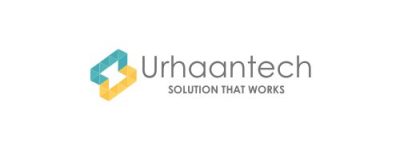If you’ve been exploring ServiceNow HR Service Delivery (HRSD), you’ve probably heard the term “Lifecycle Event.” But what does it actually mean — and how is it different from a simple HR case or task?
Let’s break it down in plain language.
🚀 What Is a Lifecycle Event in HRSD?
A Lifecycle Event is a multi-step HR process that guides an employee through a significant moment in their journey with the organization — such as joining, taking parental leave, relocating, or getting promoted.
Think of it like a workflow bundle that:
✅ Starts with a trigger (employee request, HR form, or system rule)
✅ Automatically launches a set of phased activities
✅ Assigns tasks to HR, Managers, IT, or Payroll teams
✅ Tracks everything in one place for full visibility
Instead of manually coordinating dozens of emails, approvals, and reminders — lifecycle events automate and orchestrate the entire process.
🧠 Why Lifecycle Events Matter
| Benefit | What It Solves |
|---|---|
| Consistency | Ensures every employee gets the same smooth experience |
| Automation | Reduces manual follow-ups and forgotten tasks |
| Cross-Team Coordination | Brings HR, IT, Finance, and Managers into one flow |
| Visibility & Tracking | Everyone knows what’s pending and who’s responsible |
| Compliance & Auditability | Every action is recorded automatically |
🧩 Key Components of a Lifecycle Event (Quick Table)
| Component | Purpose | Example |
|---|---|---|
| Trigger | What starts the event | Employee submits onboarding form |
| Activity Sets / Phases | Logical stages of the event | Pre-boarding → Day 1 Setup → Post-Hire Follow-up |
| Activities / Tasks | Individual steps assigned to teams | HR collects documents, IT creates laptop access |
| Roles / Owners | Who is responsible | HR, Manager, IT, Payroll |
| Conditions / Branching | Logic to personalize flow | If remote hire → skip office access |
| Notifications | Alerts and reminders | “Reminder: Approve laptop access” |
| Completion Rules | When the lifecycle officially ends | All tasks marked complete |
✅ Real Examples of Lifecycle Events
Below are three commonly-used HR lifecycle events, fully broken down.
1️⃣ Onboarding Lifecycle Event
| Phase | Key Activities | Owners |
|---|---|---|
| Pre-Boarding | Offer acceptance, collect documents, background check | HR |
| Day 1 Setup | IT account creation, equipment assignment, orientation schedule | IT & HR |
| Role Introduction | Introduce team, assign buddy, review goals | Manager |
| Post-Onboarding Follow-up | Feedback survey, probation review | HR & Manager |
✨ Branching Example: If the new hire is remote — skip physical access card request.
2️⃣ Maternity / Parental Leave Lifecycle Event
| Phase | Key Activities | Owners |
|---|---|---|
| Leave Request & Approval | Submit medical documents, manager approval | Employee & HR |
| Pre-Leave Setup | Update payroll status, handover tasks, system access adjustments | HR & Manager |
| During Leave Monitoring | Periodic check-ins, benefit tracking | HR |
| Return to Work | Re-enable access, reintegration plan, welcome communication | HR & IT |
| Closure | Feedback + close event | HR |
✨ Branching Example: If employee extends leave — trigger additional approval flow.
3️⃣ Promotion / Role Change Lifecycle Event
| Phase | Key Activities | Owners |
|---|---|---|
| Proposal & Approval | Manager submits promotion request, HR validates | Manager & HR |
| Transition Planning | Define new responsibilities, effective date | HR & Employee |
| Access & Benefits Update | IT adjusts access, payroll updates compensation | IT & Payroll |
| Post-Promotion Review | Feedback after 30/60 days | Manager |
✨ Branching Example: If promotion involves department change — notify new team automatically.
🎯 Final Thoughts
Lifecycle events are the backbone of scalable HR automation in ServiceNow. If you’re currently managing onboarding or leave processes manually, converting them into Lifecycle Events is one of the fastest wins you can deliver for your HR team.

